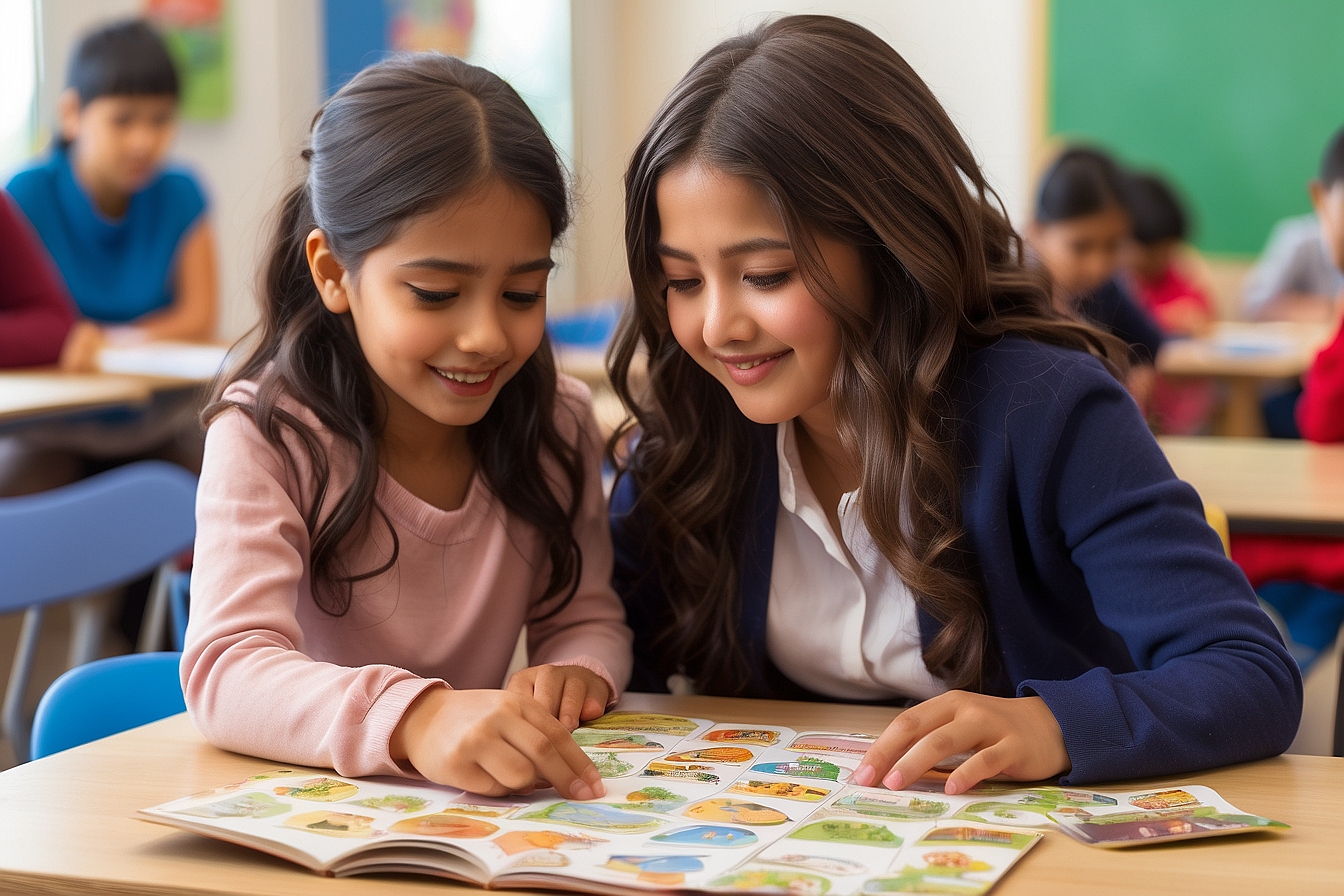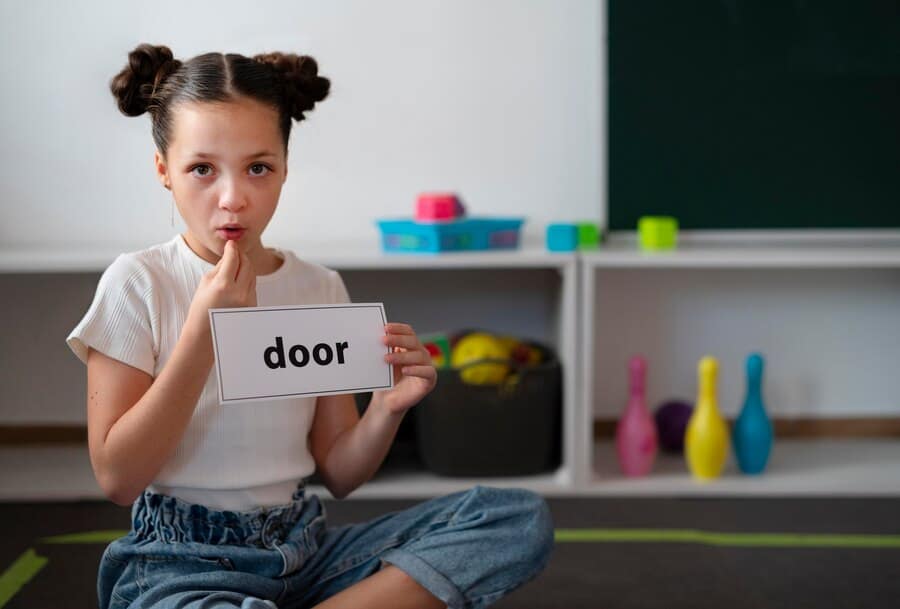
Learning English Literacy Games for Kids: Great Ideas for KS1, KS2, EAL & ESL
Table of Contents
Learning English Literacy Games for Vocabulary
Are you searching for the right ways that would help you teach your kids English? We have an idea here that you could try, it is fun and would give them the chance to know more English vocabulary and most importantly be able to think.
Learning English Literacy Games, Everyone can Play
English is the language that is used wide world in every country you go to, there are only few ones where you would find it difficult to deal with its people if they don’t speak English.
Learning English Literacy Games: Squishy Bananas
That should be enough to teach your kids English especially if it is not the main language of the country you are from. The “Squishy Bananas” is the game we are suggesting for the kids so that they could think about new vocabulary and questions to ask.
The “squishy bananas” is build on the idea of letting a number of kids sit around in a circle and then one starts with directing a question at a specific person, that person should answer immediately with saying “squishy bananas” and that kid should resist laughing even if the rest of the players did.
The one who was asked will then take the turn and ask a third player who will also provide the same answer no matter what the question is.
Learning English with Laughter: KS1 Literacy Games for Fun and Growth!
Calling all KS1 educators and excited learners! Dive into a world of playful learning with these engaging literacy games designed specifically for children aged 5-7 years old. From mastering phonics and letter recognition to building vocabulary and understanding sentence structure, these activities will spark curiosity, boost confidence, and make learning English an exciting adventure!
Phonics and Letter Recognition Games:
- Alphabet Bingo: Transform learning the alphabet into a lively competition! Create bingo cards with uppercase and lowercase letters, call out letters randomly, and let the fun begin! You can personalize it with pictures or words instead of letters for visual learners.
- Letter Hunt: Hide foam letters, magnetic letters, or even draw them on cards around the room. Challenge kids to find specific letters, forming words as they collect them. Make it more exciting by setting a time limit or adding movement, like hopping to each letter.
- Playdough Pals: Let kids get creative with playdough! Shape letters, spell simple words, or even create animals or objects that start with specific sounds. This hands-on experience reinforces letter recognition and phonics in a fun, sensory way.
- Rhyming Race: Challenge kids to find objects or pictures that rhyme with a given word. This builds phonemic awareness and encourages vocabulary exploration. Run around the house or outdoors, making it a playful treasure hunt.

Vocabulary-Building Games:
- Word Pair Relay: Divide into teams and stand in lines. The first person in each team whispers a word to the next, who continues whispering it down the line until the last person shouts it out. The first team to guess the original word correctly wins! This reinforces listening skills and vocabulary recall.
- Category Sort: Prepare cards with various categories like animals, food, clothes, etc. Give kids individual cards with pictures or words and challenge them to sort them into the correct categories. Encourage them to discuss and explain their choices, expanding their vocabulary in the process.
- Picture Charades: Act out words or phrases based on pictures or flashcards. Teammates guess the word, promoting vocabulary understanding and communication skills in a fun, interactive way.
- Storytelling Sack: Fill a bag with objects representing different vocabulary words. Take turns picking an object, incorporating it into a story you create together. This encourages creative storytelling and reinforces vocabulary usage in context.
Sentence Structure and Grammar Games:
- Sentence Scramble: Write simple sentences on individual cards and cut them into words. Kids unscramble the words to form the correct sentence, practicing sentence structure and word order. You can increase difficulty by using longer sentences or introducing punctuation marks.
- Verb-Noun Matching: Prepare cards with verbs on one side and nouns on the other. Shuffle and deal them face down. Players pick two cards, trying to form a correct verb-noun pair. Discuss why some combinations work and others don’t, reinforcing grammatical understanding.
- Silly Sentences: Take turns adding words to create a funny, nonsensical sentence. This activity encourages creativity and introduces different parts of speech in a relaxed way.
- Action Story: Start a story together, taking turns adding sentences and performing actions related to the story. This integrates grammar, vocabulary, and storytelling, making learning active and engaging.
KS2 Literacy Games: Adventures in Reading, Writing, and Wordplay!
Get ready to dive into interactive learning for children aged 7-11 years old with these exciting literacy games designed for KS2! From boosting reading comprehension and creative writing skills to mastering spelling and expanding vocabulary, these activities will foster engagement, collaboration, and a love for the English language.
Reading Comprehension Games:
- Story Cubes: Spark imagination and story creation with story cubes! Each cube displays different images or prompts. Roll the cubes, pick an image from each, and weave them into a collaborative story. This encourages critical thinking, sequencing, and inferencing skills.
- Character Charades: Act out iconic characters from books or create your own! Others guess the character and discuss their traits and roles in the story. This develops comprehension of character development and motivates reading analysis.
- Mystery Clues: Write down key details from a story on separate cards. Divide into teams and distribute the clues. Teams race to piece together the clues and solve the mystery, promoting close reading and critical thinking.
- Newspaper Headlines: Present students with fictional news headlines based on familiar stories. Challenge them to predict the events that led to the headline, encouraging them to recall details and make inferences.
Writing and Storytelling Games:
- Story Starters: Provide intriguing opening lines or plot hooks for writing prompts. Students use these starters to craft their own unique stories, boosting creative writing skills and narrative development.
- Plot Twist Relay: Start a story with an engaging first paragraph. Players take turns adding sentences, introducing unexpected twists and turns. This fosters collaboration, creative thinking, and plot development skills.
- Descriptive Scavenger Hunt: Hide objects around the room with varying textures, colors, and shapes. Challenge students to write vivid descriptions of each object without revealing its name. This strengthens descriptive writing skills and sensory awareness.
- Dear Diary: Choose a character from a familiar story and write diary entries from their perspective. This activity encourages empathy, understanding different viewpoints, and creative writing based on existing texts.
Spelling and Vocabulary Games:
- Word Ladder: Start with a simple word and challenge players to change one letter at a time to create another valid word. Continue the chain, forming a ladder of connected words. This promotes spelling skills and vocabulary knowledge.
- Crossword Puzzles: Create or use pre-made crossword puzzles themed around specific topics or book characters. Completing them reinforces spelling, vocabulary, and critical thinking skills.
- Scrabble with a Twist: Play classic Scrabble with an additional rule – each word must relate to a chosen theme or category, like emotions, historical events, or specific vocabulary sets. This expands vocabulary while maintaining the fun of competition.
- Boggle Bonanza: Use a Boggle game board or create your own grid of letters. Players find as many words as possible within a time limit, promoting spelling awareness, vocabulary recall, and strategic thinking.
Literacy Games for EAL & ESL Learners: Building Confidence and Communication Skills!
Learning a new language can be exciting, but also challenging. These engaging literacy games will help your EAL and ESL students develop their conversational, listening, and cultural understanding in a fun and interactive way!

Conversational and Speaking Games:
- Hot Potato: Start with a ball or soft toy. Students sit in a circle and answer a question or complete a task (e.g., say their name, describe their favorite food) when they hold the “hot potato.” This encourages quick thinking and spontaneous speaking.
- Charades: Act out words or phrases related to daily life, hobbies, or current events. Students guess the word/phrase, practicing pronunciation and vocabulary in a context-rich environment.
- Twenty Questions: Think of a person, place, or thing. Students take turns asking yes/no questions to guess your choice. This game promotes active listening, critical thinking, and asking clarifying questions.
- Storytelling Relay: Start a story with a sentence or two. Students take turns adding sentences, building on the narrative collaboratively. This encourages creative storytelling, vocabulary use, and listening skills.
Listening Comprehension Games:
- Audio Dictation: Play short audio clips of dialogues, instructions, or descriptions. Students write down what they hear, practicing their listening comprehension and spelling skills. Start with simple clips and gradually increase difficulty.
- Memory Games: Play memory games with audio recordings of words or phrases. Students listen, memorize, and then try to recall the correct order. This strengthens auditory memory and vocabulary recall.
- Simon Says: Give instructions with actions, some starting with “Simon Says” and others without. Students follow the instructions only when they hear “Simon Says,” promoting active listening and understanding of commands.
- Guess the Sound: Play recordings of different sounds (nature, animals, objects) and challenge students to identify them. This builds auditory discrimination and vocabulary related to everyday sounds.
Cultural and Contextual Games:
- Idiom Bingo: Create bingo cards with common idioms. Read out definitions or context clues, and students mark the corresponding idiom. This introduces them to idiomatic expressions and their cultural nuances.
- Proverb Matching: Write proverbs from different cultures on cards. Students match proverbs with their meanings, promoting understanding of cultural values and their expression through language.
- “This or That”: Present pairs of contrasting options related to different cultures (e.g., formal vs. informal greetings). Students discuss the differences and why they exist, fostering intercultural understanding and communication.
- Picture Detectives: Show pictures depicting cultural scenarios from different countries. Students discuss what they see, ask questions, and make inferences about the cultural context. This encourages critical thinking and exploration of cultural differences.
Cultivating Literacy: Building a Stimulating and Game-Filled Learning Environment
A literacy-rich environment isn’t just about bookshelves and posters; it’s a vibrant space that ignites curiosity, fosters engagement, and makes learning language an enjoyable adventure. Here’s how you can create this magic:
Importance of a Stimulating Environment:
- Motivates and inspires: Surrounding students with literacy materials and activities sparks their interest in language and encourages them to explore writing, reading, and communication.
- Provides opportunities for independent learning: Literacy-rich corners and learning centers empower students to discover and practice language skills at their own pace.
- Promotes collaboration and communication: Games and activities that encourage interaction and teamwork build communication skills and foster a sense of community.
Incorporating Literacy Games:
- Daily Routines:
- Start the day with a “Word of the Day” displayed, discussed, and used throughout the day.
- Integrate quick vocabulary games like “I Spy” or “Synonym Showdown” during transitions.
- End the day with collaborative storytelling games like “Story Chain” or “Would You Rather?”
- Learning Centers:
- Set up a “Reading Nook” with comfortable seating, diverse books, and audio options.
- Create a “Writing Workshop” with materials like journals, prompts, and word lists.
- Design a “Game Zone” with literacy board games, card games, and digital games.
- Free Time:
- Organize “Game Days” where students choose from a variety of literacy games to play individually or in groups.
- Host “Book Clubs” where students discuss favorite reads and engage in creative activities based on the books.
- Have “Mystery Boxes” filled with literacy-related surprises like puzzles, charades prompts, or riddles.
Online and Digital Literacy Games:
- Educational Apps:
- Epic!: An extensive library of ebooks and audiobooks with engaging activities.
- Reading Eggs: Interactive lessons and games focusing on phonics, vocabulary, and reading comprehension.
- Tynker: Coding games that develop computational thinking and problem-solving skills.
- Websites:
- PBS Kids: Educational games and activities based on popular shows and characters.
- Storyline Online: Actors read aloud children’s books with engaging animations and activities.
- National Geographic Kids: Interactive quizzes, games, and articles about animals, science, and history.
- Virtual Games:
- Minecraft Education Edition: Creative game environment with curriculum-aligned activities for various subjects, including literacy.
- Roblox: User-generated platform with educational games created by teachers and developers.
- Osmo Words: Physical tiles and digital app that build vocabulary and spelling skills.
Benefits and Challenges of Digital Resources:
Benefits:
- Engaging and interactive: Digital games can be visually appealing and provide immediate feedback, keeping students motivated.
- Differentiation: Many apps and games offer customizable difficulty levels and cater to diverse learning styles.
- Accessibility: Online resources can provide access to a wider range of materials and experiences than a physical classroom alone.
Challenges:
- Screen time: Excessive screen time can have negative impacts on health and attention span.
- Equity of access: Not all students have equal access to devices and reliable internet connections.
- Technical difficulties: Technology glitches or software limitations can disrupt learning activities.

Learning English Literacy Games: FAQ
1. What are the benefits of using games for literacy development?
Games make learning fun and engaging, motivating students to practice reading, writing, vocabulary, and communication skills. They also promote collaboration, critical thinking, and problem-solving in a safe and supportive environment.
2. How can I adapt games to different learning styles and levels?
Consider offering multiple difficulty levels, using visuals and audio cues, providing scaffolding and prompts, and encouraging teamwork. Consider the tips mentioned in the “Adapting Games for Different Levels and Learning Styles” section for specific strategies.
3. What are some online and digital resources that support literacy development?
There are numerous educational apps, websites, and virtual games available. Explore options like Epic!, Reading Eggs, Tynker, PBS Kids, Storyline Online, National Geographic Kids, and Minecraft Education Edition. Remember to prioritize educational value and age-appropriateness.
4. What are the potential challenges of using digital resources in the classroom?
Excessive screen time, unequal access to technology, and technical difficulties can pose challenges. It’s important to set clear guidelines, choose high-quality resources, monitor student progress, and offer support to ensure responsible and effective technology use.
5. How can I create a literacy-rich environment in my classroom?
Fill your space with books, posters, word walls, and engaging materials. Incorporate literacy games into daily routines, learning centers, and free time. Encourage student choice, collaboration, and independent exploration.
Learning English Literacy Games: Conclusion
Learning doesn’t have to be confined to textbooks and worksheets. By incorporating engaging games and creating a stimulating environment, you can transform your classroom into a vibrant hub for literacy development. Remember, the journey of learning is most enriching when it’s filled with fun, exploration, and a genuine love for language. So, equip your students with the tools and enthusiasm they need to embark on a lifelong adventure with words!
Have you found this interesting? Come and find more English Language articles: English Language Literacy Guide, Consonants and Vowels, Adjective Games: Fun with the English Language, Great Literacy Skills: Learning English, English Teaching Resources, 12 reasons why it is a powerful idea to study English and Learning English- Literacy Games for Kids.
Why not subscribe to our LearningMole Library for as little as £1.99 per month to access over 1400 fun educational videos.





Leave a Reply